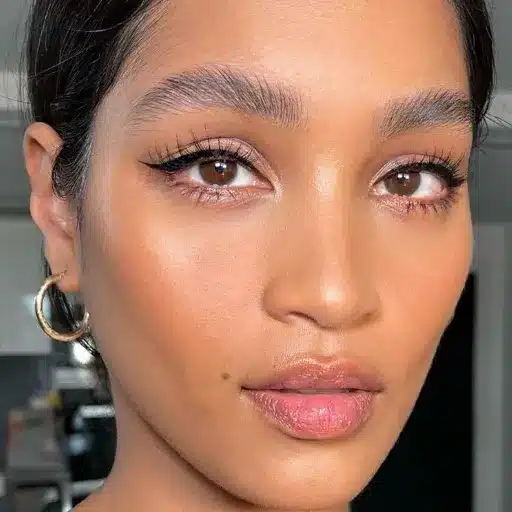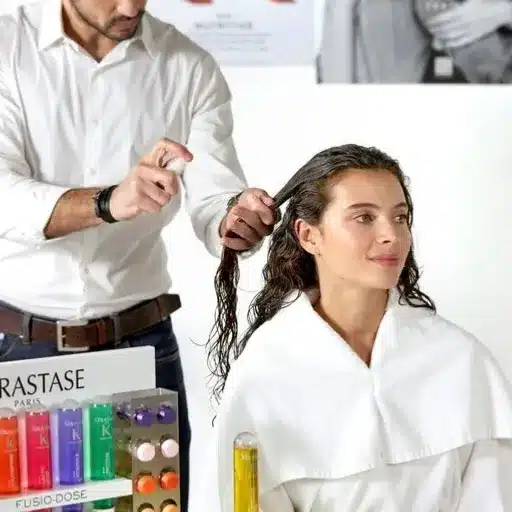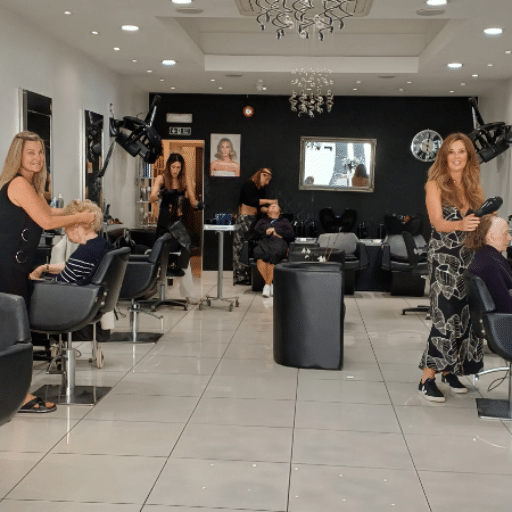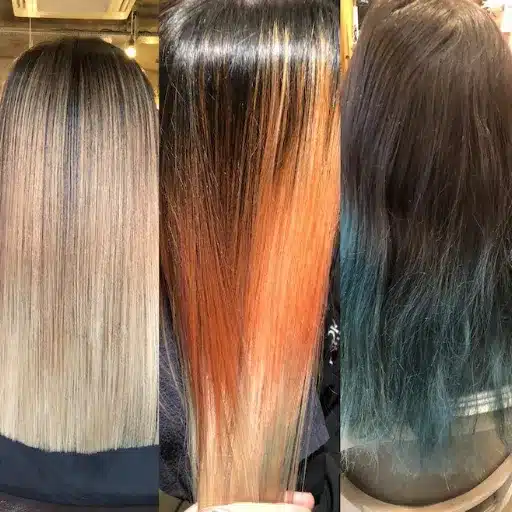The perfect haircut means much more than just sitting down and hoping for the best—it requires communication. Your hairdresser must have the correct information to help you achieve a style that suits your attitude, lifestyle, and hair type. This guide will help you close the gap between what you have imagined and what the stylist delivers. From identifying your preferred styles and cuts to discussing your hair care habits and tips, this will cover the essentials you should discuss during your consultation. Whether you’re working something funky and trendy or something a bit different, this comprehensive guide will set you up so you can head out of the salon with confidence and satisfaction.
Understanding Your Hair Goals

When defining your hair goals, start by asking exactly what you want to achieve with your hair. Consider compatibility with your lifestyle, maintenance requirements, or the level of change. Bring photos or references to the consultation with specific details you like, such as length, layering, or texture. Be very much clear about hair care habits. For example, you rarely style your hair or wash it. This will guide them in recommending a cut and style appropriate for your lifestyle. Also, inform them if you have long-term goals, such as growing your hair or maintaining color treatments, so they can develop a plan that suits you.
How to Describe the Haircut You Want
When describing the haircut you want, start by mentioning any photos or visual inspirations that resemble your ideal style. Convey length, layers, texture, and shape so that the stylist can visualize what you want. Let them know about any personal traits related to your hair, your day-to-day styling routine, and how much time you want to spend on maintenance, so they can tailor the cut to your needs. Also, discuss any long-range goals, such as growing out your hair, keeping up with current treatments, or jumping on a new trend. The more detailed you are with communication and examples, the better the result.
Why You Should Discuss Your Hair History
Discussing your hair history with a stylist becomes an essential factor in providing the best service, tailored to your client’s needs. A person down-dos chemical and styling history would consist of past color treatments, heat damage, and chemical processing; these variables determine the present condition, texture, and porosity of the hair. By sharing this information with your stylist, they will select treatments and products best suited to work with the structure of your hair, while avoiding further damage. Furthermore, allow your stylist to make alterations in case you have had previous issues with certain products or maybe cuts that did not feel right, all of which help to meet your hair goals and comfort levels. This dialogue lays the groundwork for a trusting relationship so that your stylist may go forth and deliver an experience eminently well informed and personalized.
Communicating Your Desired Hairstyle
Provide your hairdresser with the clearest possible set of clues, consisting of pictures or screenshots, to accurately communicate your intended hairstyle. Be specific about which parts you like, how long it should be, or the texture or color that suits your preference, or how it sums up your style or need. Describe the process itself: how much length must be removed, or in your opinion, what sort of layers it requires. Additionally, you can seek the professional opinion of a hairstylist to determine how the style will complement your hair type, face shape, or lifestyle, ensuring that both of you can truly achieve your goals. These two things—open communication plus clear visuals—are the key to achieving a hairstyle that fulfils your vision.
Essential Information to Share with Your Hairdresser

When visiting your hairdresser, it is helpful to provide concise specifics to help realize the ultimate goal. One might want to be specific with length, texture, or style. Measurement or comparison works best. Past hair issues should also be discussed; for example, if it was often difficult to style or became too frizzy, the hairdresser might cut it differently. Also specify what the typical ‘daily hair routine’ encompasses, along with the allowed styling time, so that they will be looking at something that is both practical and sustainable. Finally, inform them about your long-term hair goals, such as whether you want to grow it out or undergo a color change, as these can significantly impact the way they treat your hair.
5 Things You Should Tell Your Stylist
- Your Hair’s History
Any past chemical treatments of the hair go in the category of information you should definitely pass on to the stylist. They should also be aware of any hair damage or sudden changes in its texture so that they can take into consideration the condition and structure of your hair. - Your Daily Routine
Describe how you usually care for your hair. Tell how often you wash it, how you typically style it, and how much time could realistically be devoted to styling in a single day. - Your Styling Preferences
Describe what you like about hair length, texture, and shape, but also get specific about what types of styles you like and dislike because this will be useful in directing the cut and finish. - Your Lifestyle
Give a picture of your life, including your job, hobbies, and how active you are in everyday life so that they can make sure your hair is fit for daily use. People that do a lot of exercise might want something that requires as little effort as possible. - Your Long-Term Goals
Talk about your future hair objectives, such as transitioning to a different color, growing your hair longer, or maintaining a consistent style. This ensures that the stylist can develop a plan tailored to your vision.
The Importance of Discussing Your Hair Type
Knowing my hair type really helps me communicate with my stylist. Whether it is thin, thick, straight, wavy, curly, or coily, hair is mostly the determining factor in choosing the best cut, style, and treatment. For example, I could say my hair is dry or frizzy, and that would help in deciding which products to recommend. Of equal importance is whether my hair is easy to manage and requires little time, allowing for a realistic plan that fits into my lifestyle, or if more care is needed. Being clear in explaining these facts will ensure the hairstylist knows how to adjust their approach to keep the hair healthy and looking good.
How to Let Your Stylist Know About Your Face Shape
The best method for determining your face shape is to come up with one yourself or have your stylist do so during your appointment. Some of the common shapes are oval, round, square, heart, and diamond, and all of these will correspond to certain hairstyles that will complement your features. For example, the oval is a very versatile shape and can carry many different styles, while round faces need volume on top to elongate their appearance. Give ideas by showing a stylist pictures of hairstyles you like and why you like them in relation to your face shape.
Please also mention any features you would like to emphasize or de-emphasize. Consider a strong jawline you want to soften, or cheekbones you would like to enhance, while your stylist develops cuts and layers in accordance with those specifications. An abbreviated and clear explanation, along with examples, will help the stylist recommend the most flattering cut and style for your face shape.
Bringing Reference Materials

When responding to the question, it is essential to discuss the hairstyles or cuts you like and how they relate to your face shape. You may mention particular features you give prominence to or points you want to soften, such as softening hard angles or forming an illusion of more symmetry. Sometimes, sharing images, such as pictures of hairstyles, works best since it gives the stylist a clearer view of your ideas. The verbalization, coupled with visuals, thus works to ensure that your stylist comes up with recommendations that focus squarely on the features and look you have requested.
Using Photos to Communicate Your Vision
The photos serve as a medium to bridge the gap between your ideas and how the stylist interprets them. By providing clear visual examples, you can specify details such as texture, color, length, and styling methodology. Ideally, you should provide at least five images that display multiple angles and lighting conditions to ensure a nuanced understanding of your vision. Pictures with styles you do not like can be just as important, for the same reasons, allowing the stylist to know what elements to avoid. Ultimately, visual references combined with thorough communication significantly increase the accuracy and quality of the result.
What to Look for in Reference Images
When selecting reference images, I aim to find illustrations that clearly convey the specific elements I want to replicate, such as color, shape, or texture. I pick well-lit, high-res images so that every detail is visible. I also try to be mindful of the context-where does the style look good? How does it look in an environment or condition different from the one shown? If possible, I try to complement the images with different perspectives or angles to clearly convey the look I have in mind. Last but not least, I also find examples of styles I don’t like so I can better assess what I want my final image to look like.
How to Discuss Variations in Your Desired Look
Communication of variations of your desired look can begin by collating visual references, such as pictures, patterns, or styles that appeal to you, and should be representative of the concept you have in mind. Mention what specific attributes-things such as color schemes, surface qualities, or shapes-are of value to you and explain why they are essential. Also, offer some examples of things that rest firmly in your “forbidden” list; these will give more context and help toward better definition. Always use direct terminologies to avoid ambiguity and simultaneously generate feedback that will help you review your guidelines. Working together becomes easier when expectations are clearly and explicitly outlined.
What to Expect During Your Salon Visit

Every salon experience is personal and professional, uniquely tailored to each client. After the client is seated, the consultation process begins: the stylist listens to the client’s plans, assesses their hair type and needs, and provides expert suggestions. Depending on the job, in addition to a gorgeous cut, the stylist may use advanced tools and high-quality products to ensure precise results in color, style, or other treatments. Some sanitary concerns and attention to detail are necessary to create a pleasant and non-threatening environment for the duration of your appointment. Your stylist will want to remain open with you to ensure that all expectations are met so you are left with a very polished-looking and satisfying outcome.
Communicating Your Desired Haircut Effectively
It is vital to communicate the desired haircut lucidly; I ensure this by providing reference pictures that explain the general style. I give details such as how long I want it, what texture I want, and anything else that might be relevant, mostly weighing down to do with layers, posterioring, or fading. I tell the stylist how I usually style my hair and ask for their opinion on whether it’d be compatible with my face shape and hair type. I am also curious about the upkeep and maintenance required to determine if I can fit it into my lifestyle. This free flow of communication helps cement any tidal waves in expectations and form a partnership aimed at attaining the best possible outcome.
Discussing Specific Products and Treatments
When I discuss specific products and treatments, I focus on options that suit my hair type, condition, and desired results. I will ask about sulfate-free shampoos or treatments that will nourish the hair through keratin or argan oil. Additionally, I inquire about protective products to use before heat styling, such as thermal sprays, along with information on whether treatments like deep conditioning or color-safe formulas would be suitable for my routine. If I receive recommendations for specific needs, I can be confident that the products and treatments will best suit my hair care and align with my maintenance routine.
Letting Your Stylist Know About Any High-Maintenance Preferences
When explaining a high-maintenance preference to your stylist, ensure you include all key points concisely. Start by stating your preference with respect to product types; for example, you want sulfate-free shampoos or treatments containing keratin for healthy strands. You should point out any “cannot do without” types of treatments in your routines, such as frequent color treatments, and ask for the best color-safe formulas that work with your maintenance routine. If heat styling is part of your maintenance routine, consider asking about professional-grade thermal protection to help prevent damage. You may also want to check the frequency of these deep-conditioning treatments, along with their cost, to determine whether they fit your schedule. By keeping it brief and to the point, you allow your stylist to focus on suggestions specifically catering to your high-maintenance requirements.
Building a Collaborative Relationship with Your Stylist

- Desired Outcome: Clearly explain the desired look, preferably with photos or a reference. That way, the stylist will understand one’s vision and offer practical advice on how to attain it.
- Maintenance Level: Describe typical hair care habits and indicate how much time one is willing to put daily or weekly into maintenance. Mention if one wants the style to be low or high maintenance.
- Heat Styling Routine: If heat-styling tools such as straighteners or curlers are frequently used, make these clear and insist on using proper heat protection products to keep hair healthy.
- Deep-Conditioning Treatments: Inquire about the frequency of treatments for your specific hair type and the associated costs. At the same time, cross-reference with your schedule to ensure there is no conflict.
- Lifestyle Needs: Anything related to your personal routine that might affect the maintenance or durability of complementing hairstyles, such as working out daily, swimming, or travelling.
By succinctly answering these inquiries, you will have laid the basis for trust and collaboration, which will enable the stylist to lead you toward the desired look and, most importantly, help you maintain that look.
How to Prepare for Your Hair Appointment
- Goals for the Appointment: I want to discuss my long-term hair goals regarding color, cut, and styling, with the aim of achieving my desired ideal aesthetic. I am looking for something that complements my features and suits my lifestyle.
- Hair History: Within recent times, my hair has experienced [mention treatments like coloring, perming, etc.], whereas it is naturally [give description of texture, thickness, or any other pertinent details]. The key factor is that any future treatments must be compatible with the care I have given my hair up to date.
- Product Use: Currently, I use [name key products or general product types, such as sulfate-free shampoo and leave-in conditioners] to wash my hair [how many times/wk]. This has been working for my hair so far, but I am open to suggestions for improvement.
- Style Maintenance: I want a style that fits within my schedule since I have [state frequency of styling availability, e.g., limited time for daily maintenance]. A good option would be a simple style that works for multiple things.
- Lifestyle Needs: I require a hairstyle that can collaborate with my activities of [eg, working out, swimming and travelling quite a bit]; while I consider putting it up and adjustment to be rare. I need something tough and practical.
Once I provided answers to these questions, I am more ready to collaborate with my stylist toward something that matches my expectations and lifestyle; also, this leads toward the efficient use of appointment time.
Creating an Ongoing Dialogue with Your Hairstylist
Keeping an ongoing dialogue going with your hairstylist is crucial for having results that remain true to your changing needs and lifestyle. For this collaboration to flourish, communicating concisely is the key. First, express exactly what your lifestyle can do to significantly affect your hair: for instance, durability is essential when you pursue active routines; that is to say, for example, a sort of style that needs almost no care so that with less hair time, one can travel reasonably well. Be honest about your likes and dislikes, and share your past experiences with hairstyling. Ask your stylist for personalized product recommendations and usage instructions. This feedback would be essential for you to discuss in the following session. Keep your stylist updated on how well your hair responds to their recommendations. This feedback will help equally assess any future sessions. Establishing this two-way communication provides a great baseline level of trust and related to your practical and aesthetic needs.
Tips for Future Visits: Letting Your Stylist Know Your Preferences
- Create a Hair Diary: Log any style changes you go through with your hair, listing the products used, their reactions, and other relevant details. This provides valuable feedback for your stylist to consider at your next appointment.
- Be Specific about Your Goals: Describe what you would like to achieve with your haircut, such as volume, moisture retention, or an exact look. Specific goals highlight how your stylist might approach the cutting process.
- Bring Reference Photos: Photos of styles you want assist your stylist in better grasping your preferences and expectations.
- Discuss the Necessities of Your Lifestyle: Your stylist should be informed about your daily routine, your preferred level of maintenance, and the time you can allocate to styling, to help select a style that suits your lifestyle.
- Please Provide Honest Feedback: If it needs to be changed or the previous recommendation has not worked as expected, discuss it openly. This constructive feedback ensures that your hairstyle experience continues to improve.
Frequently Asked Questions (FAQs)
What to Tell Your Hair Stylist for the Best Haircut?
Effective communication is crucial with the stylist before any hair appointment. Tell a hairdresser about the type of hair look you want and the particular hair style you want. A good stylist will ask you questions to better understand your preferences, so don’t hesitate to ask about anything you want to know regarding your hair type and how it works with different haircuts.
How Do You Tell Your Hair Type to Your Hairdresser?
Understanding your hair texture is essential. You can declare to the stylist that you have curly hair, fine hair, or thick hair. This information helps you select two or three haircuts that will best suit you. Do not shy away if you do not know; just ask for suggestions from your hair stylist.
What Should You Bring to Your Next Salon Appointment?
Bring pictures of the hairstyles you like so they can convey this idea to your hairstylist about what you really want. Ensure that you show images with hair types similar to your own, as what works for one person may not work for another. With your stylist, the haircut or hairstyle can be further enhanced to make it suitable for your hair condition.
What to Ask for High-Maintenance Hair Types?
If you are looking for a high-maintenance style, such as a pixie cut or beachy waves, consult your hairdresser about the products necessary to achieve it. Also, inquire about how often you’d need to go back for maintenance and the hair-care routine that supports your look. Your stylist will help guide you in the right direction regarding product usage and techniques to maintain your hair at home.
How Can One Ensure That a Hair Stylist Understands Their Concerns?
Anything concerning your hair that is on your mind should be expressed during your appointment. Impart to your stylist if you have had bad experiences in the past or if you fear that the new hairstyle is not going to look on you. A good hairdresser should listen to your concerns and work with you toward a solution you feel comfortable with and satisfied by.
What Should You Say to Your Hairdresser if Changing Your Hair Style?
If you want to change your hair style, you must make your hairdresser realize why. Is it time for something new? Maybe it has to be easy to handle. Discussing your reasons can lead to professional suggestions on what options will best fit your situation.
Reference Sources
-
How to Talk to Your Hairstylist and Get the Look You Want – A guide on preparing for a salon visit and effectively communicating with your hairstylist.
-
How To Tell Your Stylist Exactly What You Want – Tips on sharing your hair history and preferences with your stylist.
-
7 Tips for Communicating With Your Hairstylist or Barber – Practical advice on how to ensure clear communication during your haircut.
-
Communication Tips for Hairstylists – Insights into how hairstylists can foster meaningful dialogue with clients.
-
Good Salon Communication: 5 Tips to Improve Your Business – A resource focusing on effective communication practices in salons.






